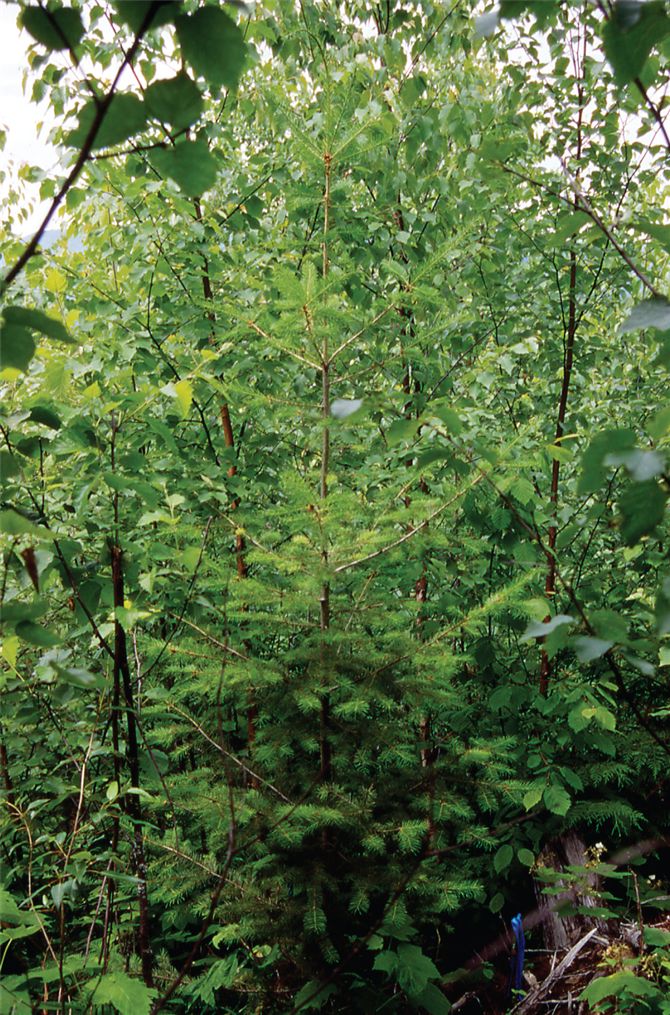 |
| Previous Image | Next Image |
| Description: As we have discussed, mycorrhizae have the potential to impact a plant's life positively or negatively, and the position along the mutualism–exploitation continuum depends upon the exact costs and benefits at any particular time. This issue has enormous implications for agriculture and forestry, and here we will discuss two examples in which mycorrhizal interactions may have significant consequences for forest regeneration and community composition. Suzanne Simard, of the University of British Columbia, has studied the ecology of ectomycorrhizae and their potential impact on forest dynamics extensively. Forest dynamics are an important issue for the forest industry, and having a detailed understanding of the factors that influence regeneration can be of broad economic importance. One of the interesting aspects of mycorrhizae is that many of the fungi involved are generalists, able to colonize the roots of different species of plants. This aspect of fungal biology is not restricted to pots in a greenhouse, but also can occur in the field, where you can regularly find one individual fungus associated with the roots of many individuals of plant speciesâ€â€Âsimultaneously. Simard developed an elegant design to test whether these shared connections could result in sugar moving toward or away from some plants (Simard 1997). In other words, could some plants partially parasitize others through these shared mycorrhizal connections? In her study she used three focal species, Betula payrifera, Pseudotsuga menziesii, and Thuja plicata (fig. 15.27), all of which are important to the forestry industry of British Columbia. Simard planted young plants of these three species together in forest soil, and after some time, fed the leaves of the plants with 13C or 14C. Why did she use these tracers? To follow the carbon. For example, if she fed Betula with 13C, but found 13C in the other plants, that would tell her the carbon moved. But does that mean it moved through hyphae? No. It is certainly possible that the carbon went from the leaves, to the roots, and then entered the soil as dead roots, or root exudate. Part of the elegance of her design is that she included Thuja in her study. This species does not share fungal species with Betula and Pseudotsuga, and so the amount of labelled carbon in Thuja would indicate how much passed through the plants to the soils, with any excess found in the other species coming through mycorrhizal connections.
Picture Stats: Views: 1283 Filesize: 204.6kB Height: 1015 Width: 670 Source: https://biology-forums.com/index.php?action=gallery;sa=view;id=1990 |
